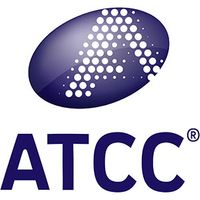Roche Diagnostics develops and produces medical tests and digital tools that provide information to help healthcare professionals find the right treatment for patients and deliver the best patient care to improve, prolong and save lives. Currently, Roche Diagnostics leads the ...
See more-
NanoString Technologies
NanoString Technologies (NASDAQ: NSTG) is a publicly held provider of life science tools for translational research and molecular diagnostics. The company's technology enables a wide variety of basic research, translational medicine and in vitro diagnostics applications ...
See more -
QIAGEN Molecular Diagnostics
QIAGEN N.V., a Netherlands holding company, is the leading global provider of Sample & Assay Technologies that are used to transform biological materials into valuable molecular information. Sample technologies are used to isolate and process DNA, RNA and proteins from biological ...
See more -
Vela Diagnostics
Vela Diagnostics is a worldwide supplier of integrated life sciences and diagnostic solutions that help provide customers with valuable molecular information. From scientists striving to make research advances to technicians reporting the information necessary to identify ...
See more -
Helmer
Helmer Scientific is an established, entrepreneurial, growth company headquartered in Noblesville, Indiana. We design, integrate, manufacture, market, and distribute specialized medical and laboratory equipment to clinical and life science customers in over 125 countries.
-
Cosmo Bio USA
Great Reagents Drive Great Research.. and Assay Development •• Who We Are •• Cosmo Bio USA, located in Carlsbad, California is North America's source for the thousands of high performance reagents and biotools for life science research exported from Japan by our parent ...
See more -
Cofactor Genomics
Cofactor is a next-generation genomics company. Working with the largest life-science and pharmaceutical companies in the world, we've developed cutting-edge, streamlined, and scalable protocols to interrogate RNA. Whether you require delivery of FASTQ files or full ...
See more -
Labroots
Labroots is the leading scientific social networking website and producer of educational virtual events and webinars. Contributing to the advancement of science through content sharing capabilities, Labroots is a powerful advocate in amplifying global networks and communities.
-
Arena International
Each year, over 10,000 business executives from Fortune 1000 companies attend over 80 Arena International events worldwide, addressed by over 1700 industry leaders delivering leading edge content and discussion. We have a large portfolio of established, annual events - many of ...
See more -
Conference Series
Conference series welcome to the world largest gathering of the 10th International Conference on Endocrinology will explore on Upswings in the ideas of Endocrinology Management by bringing the international academics, practitioners, and experts together in Chicago, USA from ...
See more -
GotScience
Delivering comprehensible science to the public-for free.
-
ManuscriptEdit
Manuscriptedit specializes in providing services in Scientific & English editing, proofreading, medical writing, academic writing, formatting and publication support. Within a short span of time, the company has grown rapidly to be counted among the world's leading service ...
See more
Molecular Diagnostics Virtual Event Series 2017
 This event is now apart of the Genetics Week Virtual Event Series.
This event is now apart of the Genetics Week Virtual Event Series.
The 2nd Annual Event in the Molecular Diagnostics Virtual Event Series is now available On Demand! This conference is a premiere venue for scientists, technologists, and professionals to discuss and present the newest advances in molecular diagnostics testing. Attend this online event ondemand at no charge.
Join LabRoots in bringing together the Molecular Diagnostics community. Attend webcasts with top experts and interact with speakers during the live Q&A sessions. Earn continuing education credits and network with peers. Enjoy the complementary conference from your desk with no need for travel, and explore the virtual exhibit hall to learn about the latest technologies and techniques for your lab.
Topics discussed at this years event included:
- Pursue Microbiome Testing as a Companion Diagnostic
- Diseases and Disorders
- Immunotherapy
- Regulatory Landscape
- Microbiome Standards related to Diagnostics
- Liquid Biopsies
Our virtual conference allows you to participate in a global setting with no travel or cost to you. You can participate in exactly those parts which you are interested in and be back at your desk or bench in an instant. Virtual events remove time and place restrictions and ensure that everyone who wants to participate can do so. This virtual conference also offers increased reach for the global diagnostics community with a high degree of interaction through live-streaming video and chat sessions.
Continuing Education
By participating in this virtual event and watching webcast presentations, you can earn Free Continuing Education (CE) and/or Continuing Medical Education (CME) credits. To earn educational credits, you must view an entire presentation. Following the presentation you must click on the educational credit link provided for that particular speaker and follow the required process. Once you have completed the process, you will receive a certificate for the educational credit.
Use #LRmoldx to follow the conversation
Agenda Share
-
-
APR 13, 2017 1:30 PM PDT
Ultra-sensitive single-molecule array (Simoa) technology to revolutionize CNS biomarkers
-
APR 13, 2017 12:00 PM PDT
Lyme Disease, Molecular Diagnostics, and Detection of New Causative Agents
-
APR 13, 2017 10:30 AM PDT
Why Variants Matter: NGS Bioinformatics Simplified for Oncology & Virology
Condie Carmack, PhDVice President of Precision Oncology, Vela DxAhmed Mahmoud, PhDDirector of Scientific Support for Vela Diagnostics, Bi... -
APR 13, 2017 9:00 AM PDT
Keynote Presentation - DNA Standards and Bioinformatics Benchmarks for Metagenomics
Christopher Mason, PhD
Associate Professor, Department of Physiology and Biophysics, WorldQuant (WQ) Scholar, Director, WQ Init. for Quantitative Prediction, Weill Cornell MedicineBIOGRAPHY -
APR 13, 2017 7:30 AM PDT
The Essential Role of the Molecular Identification of Microorganisms in the Management of Chronic Infections
-
APR 13, 2017 6:00 AM PDT
The Pandora's box of molecular diagnostics: Genomic analysis of uterine lavage fluid detects early endometrial cancers
John A. Martignetti, MD, PhD
Icahn School of Medicine at Mount Sinai Departments of Genetics and Genomic Sciences, Pediatrics, Obstetrics/Gynecology & Reproductive Sciences and Oncological SciencesBIOGRAPHY -
APR 12, 2017 1:30 PM PDT
Perspectives for Whole Cell Microbial Reference Materials
J. Russ Carmical, PhD
Sequencing Director/Director of Operations, Alkek Center for Metagenomics and Micobiome Research (CMMR) at Baylor College of Medicine and Director of Operation of DiversigenBIOGRAPHY -
APR 12, 2017 12:00 PM PDT
PAMA: The First Reporting Period is Over. What Does This Legislation Mean for Laboratorie
Roger D. Klein MD, JD, FCAP
Principal at Roger D. Klein, MD JD Consulting and Klein & Klein Co., L.P.A. Faculty Fellow at the Arizona State University Sandra Day O'Connor College of Law's Center for Law, Science &BIOGRAPHY -
APR 12, 2017 10:30 AM PDT
Prediction of enzalutamide sensitivity in triple negative breast cancer
Joel Parker, PhD
Director, Bioinfomatics, Associate Professor, University of North Carolina, Chapel HillBIOGRAPHYSponsored By: NanoString Technologies -
APR 12, 2017 7:30 AM PDT
Keynote Presentation - Variant interpretation in Molecular Diagnostics: Challenges and Knowledge Gaps
-
APR 12, 2017 6:00 AM PDT
Standards for Microbiome and Metagenomics: Supporting the Commercial Translation of Microbiome Science
Jason Kralj, PhD
Leader of the Metagenomic Pathogen Detection Program, National Institute of Standards and TechnologyBIOGRAPHY
- Microbiome Standards related to Diagnostics
-
APR 12, 2017 6:00 AM PDT
Standards for Microbiome and Metagenomics: Supporting the Commercial Translation of Microbiome Science
Jason Kralj, PhD
Leader of the Metagenomic Pathogen Detection Program, National Institute of Standards and TechnologyBIOGRAPHY -
APR 12, 2017 1:30 PM PDT
Perspectives for Whole Cell Microbial Reference Materials
J. Russ Carmical, PhD
Sequencing Director/Director of Operations, Alkek Center for Metagenomics and Micobiome Research (CMMR) at Baylor College of Medicine and Director of Operation of DiversigenBIOGRAPHY -
APR 13, 2017 9:00 AM PDT
Keynote Presentation - DNA Standards and Bioinformatics Benchmarks for Metagenomics
Christopher Mason, PhD
Associate Professor, Department of Physiology and Biophysics, WorldQuant (WQ) Scholar, Director, WQ Init. for Quantitative Prediction, Weill Cornell MedicineBIOGRAPHY - Diseases and Disorders
-
APR 12, 2017 7:30 AM PDT
Keynote Presentation - Variant interpretation in Molecular Diagnostics: Challenges and Knowledge Gaps
-
APR 13, 2017 12:00 PM PDT
Lyme Disease, Molecular Diagnostics, and Detection of New Causative Agents
-
APR 13, 2017 1:30 PM PDT
Ultra-sensitive single-molecule array (Simoa) technology to revolutionize CNS biomarkers
- Oncology
-
APR 12, 2017 10:30 AM PDT
Prediction of enzalutamide sensitivity in triple negative breast cancer
Joel Parker, PhD
Director, Bioinfomatics, Associate Professor, University of North Carolina, Chapel HillBIOGRAPHYSponsored By: NanoString Technologies -
APR 13, 2017 6:00 AM PDT
The Pandora's box of molecular diagnostics: Genomic analysis of uterine lavage fluid detects early endometrial cancers
John A. Martignetti, MD, PhD
Icahn School of Medicine at Mount Sinai Departments of Genetics and Genomic Sciences, Pediatrics, Obstetrics/Gynecology & Reproductive Sciences and Oncological SciencesBIOGRAPHY -
APR 13, 2017 10:30 AM PDT
Why Variants Matter: NGS Bioinformatics Simplified for Oncology & Virology
Condie Carmack, PhDVice President of Precision Oncology, Vela DxAhmed Mahmoud, PhDDirector of Scientific Support for Vela Diagnostics, Bi... - Regulatory Landscape
-
APR 12, 2017 12:00 PM PDT
PAMA: The First Reporting Period is Over. What Does This Legislation Mean for Laboratorie
Roger D. Klein MD, JD, FCAP
Principal at Roger D. Klein, MD JD Consulting and Klein & Klein Co., L.P.A. Faculty Fellow at the Arizona State University Sandra Day O'Connor College of Law's Center for Law, Science &BIOGRAPHY - Pursue Microbiome Testing as a Companion Diagnostic
-
APR 13, 2017 7:30 AM PDT
The Essential Role of the Molecular Identification of Microorganisms in the Management of Chronic Infections
- Liquid Biopsies
-
Speakers Share
-
Robert L. Nussbaum MD, FACP, FACMG
Chief Medical Officer, Invitae
BIOGRAPHY
-
Christopher Mason, PhD
Associate Professor, Department of Physiology and Biophysics, WorldQuant (WQ) Scholar, Director, WQ Init. for Quantitative Prediction, Weill Cornell Medicine
BIOGRAPHY
-
Catherine Behrens, MD, PhD, FACOG
Consultant Senior Director, Clinical Research
BIOGRAPHY
-
Condie Carmack, PhD
Vice President of Precision Oncology, Vela Dx
BIOGRAPHY
-
J. Russ Carmical, PhD
Sequencing Director/Director of Operations, Alkek Center for Metagenomics and Micobiome Research (CMMR) at Baylor College of Medicine and Director of Operation of Diversigen
BIOGRAPHY
-
Scott Jackson, PhD
Group Leader - Complex Microbial Systems, NIST
BIOGRAPHY
-
Andreas Jeromin, PhD
Chief Medical Officer (consulting), Quanterix Corp
BIOGRAPHY
-
Roger D. Klein MD, JD, FCAP
Principal at Roger D. Klein, MD JD Consulting and Klein & Klein Co., L.P.A. Faculty Fellow at the Arizona State University Sandra Day O'Connor College of Law's Center for Law, Science &
BIOGRAPHY
-
Jason Kralj, PhD
Leader of the Metagenomic Pathogen Detection Program, National Institute of Standards and Technology
BIOGRAPHY
-
Ahmed Mahmoud, PhD
Director of Scientific Support for Vela Diagnostics, Bioinformatics Applications scientist
BIOGRAPHY
-
John A. Martignetti, MD, PhD
Icahn School of Medicine at Mount Sinai Departments of Genetics and Genomic Sciences, Pediatrics, Obstetrics/Gynecology & Reproductive Sciences and Oncological Sciences
BIOGRAPHY
-
Joel Parker, PhD
Director, Bioinfomatics, Associate Professor, University of North Carolina, Chapel Hill
BIOGRAPHY
-
Bobbi Pritt, MD
Pathologist, Laboratory Medicine and Pathology, Mayo Clinic
BIOGRAPHY
-
Randall D. Wolcott, MD
Medical Director, Southwest Regional Wound Care Center
BIOGRAPHY
Event Series

Precision Medicine: Genomics, Genetics & Molecular Diagnostics Virtual Event Series 2026

Precision Medicine: Genomics, Genetics & Molecular Diagnostics Virtual Event Series 2025

Precision Medicine: Genomics, Genetics & Molecular Diagnostics Virtual Event Series 2024

Genetics Week Virtual Event Series 2023

Genetics Week Virtual Event Series 2022

Forensic Sciences Virtual Event Series 2021

Genetics Week Virtual Event Series 2021

Forensic Sciences Virtual Event Series 2020

Genetics Week Virtual Event Series 2020

Genetics and Genomics Virtual Event Series 2019

Molecular Diagnostics Virtual Event Series 2019

Genetics and Genomics Virtual Event Series 2018

Molecular Diagnostics Virtual Event Series 2018

Genetics and Genomics Virtual Event Series 2017

Genetics and Genomics Virtual Event Series 2016

Molecular Diagnostics Virtual Event Series 2016

Genetics and Genomics Virtual Event Series 2015

Genetics and Genomics Virtual Event Series 2014

Genetics and Genomics Virtual Event Series 2013
-
Bryan Cobb
Dr. Cobb is the acting Director for Clinical Molecular Diagnostics at Roche Diagnostics Corporation where he serves in a scientific advisory role supporting the laboratory scientific community. He obtained his Ph.D. in Medical Genetics at the University of Alabama at Birmingham ...
See more -
Shawn Baker
Dr. Shawn C. Baker is the Chief Science Officer and co-founder of AllSeq. Having received his Ph.D. at the University of California - Davis, he started his career as a Research Scientist at Illumina when it was a 15-person startup. After spending several years at the bench ...
See more -
Judd Moul
Judd W. Moul is James H. Semans, MD Professor of Surgery, Division of Urologic Surgery, and Director of the Duke Prostate Center, Duke Cancer Institute at Duke University Medical Center. Prior to joining Duke, he was Professor of Surgery at the Uniformed Services University of ...
See more -
Emily Hollister
Emily Hollister is the Director, R&D, Computational Biology for Diversigen. An accomplished microbial ecologist, her microbiome experience ranges from soils and biofuel production systems to the human microbiome and pre-clinical disease models. She leads a team of ...
See more




































































